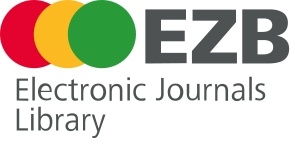Phototherapy as a treatment for hyperbilirubinemia: the influence of newborn's weight and feeding on treatment effectiveness
DOI:
https://doi.org/10.56294/shp2025221Keywords:
Respiratory distress syndrome, adult, Prone position, Meta-analysisAbstract
Introduction: Prone ventilation has been shown to improve oxygenation and lung mechanics in patients with acute respiratory distress syndrome, but I consider it necessary to delve deeper into the relationship between the prone position and mortality. Objectives: To evaluate whether the prone position decreases the risk of mortality in adult patients with acute respiratory distress syndrome vs. supine ventilation, in a global and segmented manner, as well as to know the main adverse effects related to it. Material and methods: A meta-analysis of randomized controlled clinical trials comparing patients in the prone vs. supine position was performed with a search in Pubmed, Embase, Cochrane Library and LILACS, and mortality, hospital stay, days of mechanical ventilation and adverse effects were evaluated. Results: Seven randomized controlled clinical trials were included in the analysis. The prone position showed a non-significant tendency to decrease mortality when analyzed globally. When stratified by subgroups, a significant decrease in the risk of mortality was found in patients: 1) ventilated with low tidal volume, 2) prolonged prone position, and 3) established before 48 hours of disease progression in severe hypoxemia. The adverse effects related to prone position were the development of pressure ulcers and orotracheal tube obstruction. Conclusion: Prone position ventilation is a safe strategy and reduces mortality in patients with severe oxygenation impairment. It should be established early, for prolonged periods, and associated with a protective ventilation strategy.
References
American Academy of Pediatrics. Management of hyperbilirubinemia in the newborn infant 35 or more weeks of gestation. Pediatrics. 2004;114(1):297–316.
Ansong-Assoku B, Shah SD, Adnan M, Ankola PA. Neonatal jaundice [Internet]. Treasure Island (FL): StatPearls Publishing; 2024 Jan– [citado 2024 abr 3]. Disponible en: https://www.ncbi.nlm.nih.gov/books/NBK470248/. PMID: 30422525.
Bertini G, Dani C, Tronchin M, Rubaltelli FF. Is breastfeeding really favoring early neonatal jaundice? Pediatrics. 2001 Mar;107(3):e41. doi: 10.1542/peds.107.3.e41. PMID: 11230622.
Bhutani VK, Johnson LH, Keren R. Diagnosis and management of neonatal jaundice. Pediatr Clin North Am. 2004;51(4):843–61.
Bilirubin metabolism: delving into the cellular and molecular mechanisms to predict complications. Egypt J Intern Med [Internet]. Disponible en: https://ejim.springeropen.com/
American Academy of Pediatrics. Core concepts: bilirubin metabolism. NeoReviews [Internet]. Disponible en: https://publications.aap.org/neoreviews/
Hepatic bilirubin metabolism: physiology and pathophysiology. SpringerLink [Internet]. Disponible en: https://link.springer.com/
Horn D, Ehret D, Gautham KS, Soll R. Sunlight for the prevention and treatment of hyperbilirubinemia in term and late preterm neonates. Cochrane Database Syst Rev. 2021;(7):CD013277. doi: 10.1002/14651858.CD013277.pub2.
Instituto Brasileiro Sou Enfermagem – IBSENF. Fototerapia e a inesperada descoberta que mudou o tratamento da icterícia neonatal [Internet]. Disponible en: https://www.souenfermagem.com.br/noticias/fototerapia-e-a-inesperada-descoberta-que-mudou-o-tratamento-da-ictericia-neonatal/
Itoh S, Okada H, Kuboi T, Kusaka T. Phototherapy for neonatal hyperbilirubinemia. Pediatr Int. 2017 Sep;59(9):959–66. doi: 10.1111/ped.13332. PMID: 28563973.
Maisels MJ. Neonatal jaundice. Pediatr Rev. 2006;27(12):443–54.
Spinelli S, García H, Aspresa N, Boccaccio C, De Luca J, Tovo A, et al. Prevalencia de ictericia en el período neonatal en un hospital público de la ciudad de Buenos Aires [Internet]. Disponible en: https://www.sarda.org.ar/images/2011/10-14.Spinelli.pdf
Slusher TM, Vreman HJ, Wong RJ. Unconjugated hyperbilirubinemia and kernicterus in infants: an update. Adv Pediatr. 2014;61(1):65–106.
Hiperbilirrubinemia neonatal [Internet]. MSD Manual – Profesional. Disponible en: https://www.msdmanuals.com/pt/profissional/pediatria/distúrbios-metabólicos,-eletrolíticos-e-tóxicos-em-recém-nascidos/hiperbilirrubinemia-neonatal
Wolff Müller P, Salazar V, Schneider Donelli TM. Dificuldades alimentares na primeira infância: uma revisão sistemática. Estud Pesqui Psicol. 2017;17(2):635–52.
Yang WC, Zhao LL, Li YC, Chen CH, Chang YJ, Fu YC, et al. Bodyweight loss in predicting neonatal hyperbilirubinemia 72 hours after birth in term newborn infants. BMC Pediatr. 2013 Sep 21;13:145. doi: 10.1186/1471-2431-13-145. PMID: 24053490; PMCID: PMC3849505.
Published
Issue
Section
License
Copyright (c) 2025 Gabriela Fernandes Ferreira, Carlos Juan Vidal (Author)

This work is licensed under a Creative Commons Attribution 4.0 International License.
The article is distributed under the Creative Commons Attribution 4.0 License. Unless otherwise stated, associated published material is distributed under the same licence.






